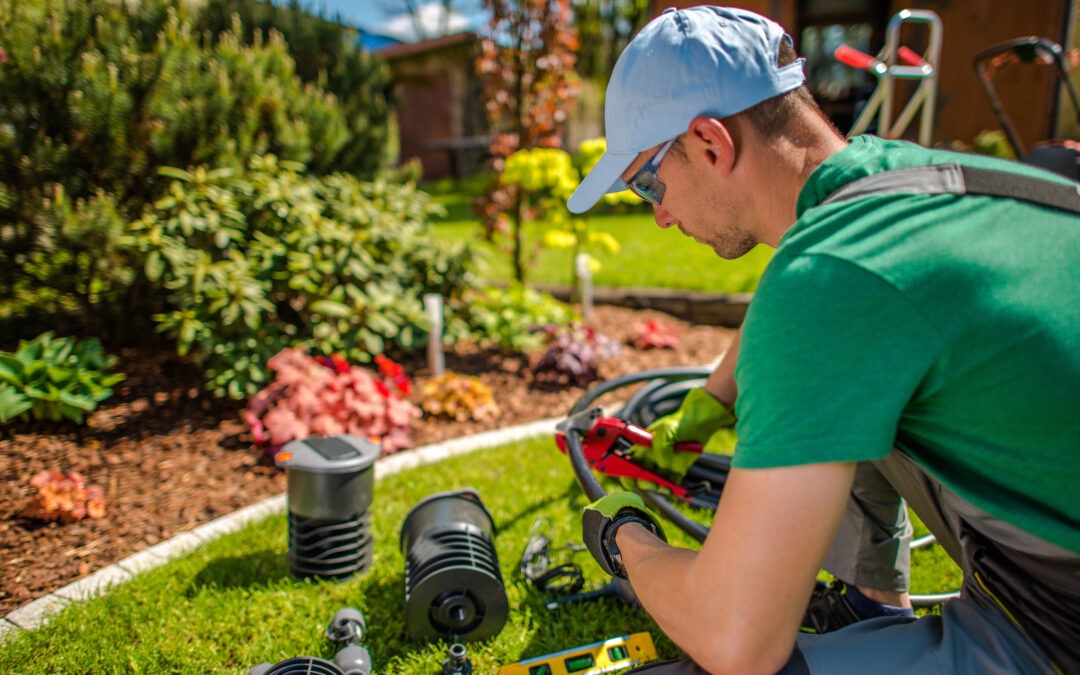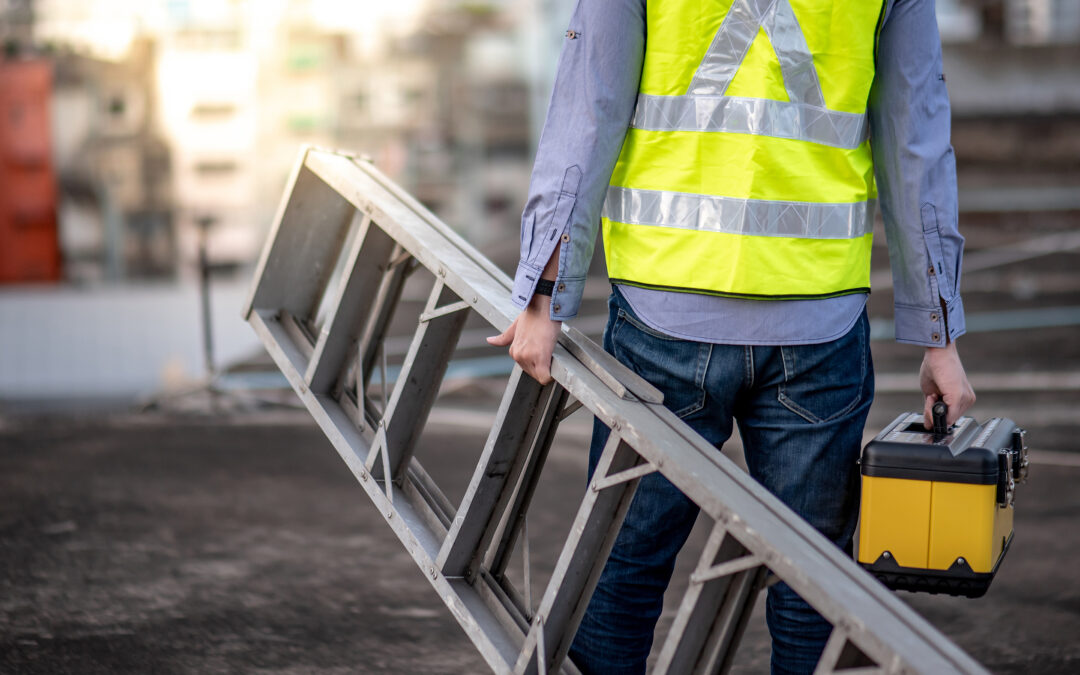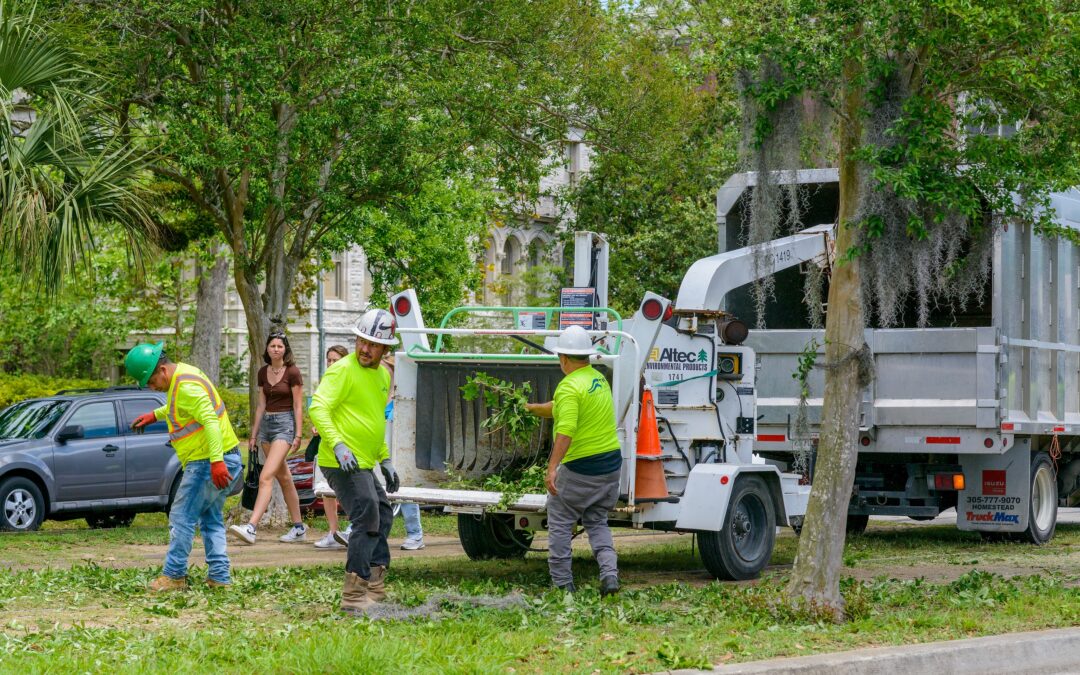It started with a cracked birdbath. A landscaper on a routine job, a distracted crewmember, a stone kicked up by a blower, and suddenly, a decorative fountain was in pieces and the client was demanding compensation.
If you’re insuring landscaping companies, you’ve probably heard stories like this. Maybe your client called in a panic after a slip-and-fall. Maybe their entire trailer of gear disappeared over lunch. Or perhaps they’re still unaware of the exposures they face on a daily basis.
The reality is this: most landscaping insurance claims aren’t rare or exotic. They’re common and often preventable. And with the right mix of training, policies and procedures, communication, and insurance coverage, it’s possible to minimize and mitigate the financial and reputational impact of many common claims and losses. Let’s break down the nine claims that come up most often in the landscaping business and discuss how you as an insurance agent can provide resources to help protect your clients.
The Top 9 Landscaping Business Insurance Claims
1. Property Damage
Whether it’s a mower that clips a car, a trimmer that chips a window, or a crew member who accidentally destroys an irrigation system, property damage is one of the most frequent and frustrating claims in landscaping.
According to Insurance Business, property damage ranks among the top small business claims, and landscaping is no exception. Residential clients often assume that “the landscaper will take care of it,” which becomes problematic if their coverage isn’t built for these moments.
What You Can Do As an Agent:
- Make sure clients’ general liability policies include sufficient limits for property damage to third parties.
- Encourage clients to document sites before and after work and to clearly communicate with customers about fragile fixtures or vehicle proximity.
- Discuss employee training; many incidents stem from actions taken by rushed or inexperienced crew members.
2. Slip-and-Fall Accidents
From wet grass to uneven pavers to tools left on paths, landscaping sites are full of hazards for clients and passersby. If someone walks through an active jobsite and ends up injured, the contractor could be held liable, even if the injury wasn’t directly caused by the work. The National Safety Council lists falls as one of the most common causes of injury, and they’re consistently one of the top liability claims in the industry.
What You Can Do As an Agent:
- Discuss site signage, cones, and barriers – basic safety measures that help prevent lawsuits.
- Recommend that clients review their contracts with an attorney to ensure liability language is strong, clear, and enforceable.
- Confirm their GL policy doesn’t have gaps when it comes to third-party injuries on job sites.
3. Equipment Theft
Trailers. Trimmers. Commercial-grade mowers. Landscaping tools are expensive, mobile, and often stored in driveways, yards, or unsecured garages, making them a prime target for theft. Some incidents make the local news, like this Georgia crew whose entire trailer was stolen in broad daylight. But most don’t. Instead, your client quietly absorbs the loss, unless they have the right landscaping business insurance coverage, including inland marine protection.
What You Can Do As an Agent:
- Demonstrate how inland marine coverage for tools and equipment is essential for any landscaping operation that utilizes mobile assets.
- Ask clients how and where they store equipment after hours. A trailer isn’t a storage solution, it’s a vulnerability.
- Recommend inventory logs and photos to support claims and recoveries.
4. Landscaping Accidents & Injuries
In this industry, landscaping injuries are a common occurrence. In 2023, landscaping and groundskeeping workers experienced over 12,000 non-fatal injuries requiring days away from work and 102 fatal occupational injuries. That makes it the highest fatality count in the building and grounds maintenance sector, according to the Bureau of Labor Statistics. Clients may not fully understand the weight of their responsibility as employers, but you can help.
What You Can Do As an Agent:
- Emphasize that workers’ comp is a must, even for smaller operations relying on part-time or seasonal workers.
- Ask clients how they train new hires on the use of equipment and safety protocols.
- Encourage them to create a culture of safety, not merely compliance.
5. Vehicle Accidents
Whether it’s a flatbed, box truck, or pickup hauling a trailer, commercial vehicle use is at the core of most landscaping businesses. And it comes with plenty of exposure, such as tight neighborhood turns, daily commutes, and fatigue during long, hot days. Even a small accident can result in significant third-party damage or injury, which may not be covered by the business’s GL policy or a personal auto policy.
What You Can Do As an Agent:
- Make sure clients have commercial auto coverage, especially if they’re using personal vehicles for business. Hired and non-owned auto coverage may be applicable for some operations.
- Discuss driver history and vehicle maintenance logs as underwriting considerations.
- Recommend telematics or GPS tracking for larger fleets. This can help defend against liability claims and control loss exposure.
6. Chemical Exposure
Landscaping crews may handle herbicides, pesticides, and fertilizers. While these are routine tools of the trade, misapplication can trigger serious consequences, especially if a child or pet is harmed. The CDC regularly warns about pesticide exposure risks in the lawn care sector. These landscaping accident claims can be costly and reputation-damaging, particularly when a homeowner alleges harm due to negligence on the part of the property owner.
What You Can Do As an Agent:
- Confirm that your client is following EPA and OSHA guidelines and providing staff training on the proper use of chemicals.
- Recommend adding pollution liability or errors and omissions (E&O) coverage to protect against misapplication claims.
- Ask about recordkeeping: Does the business document which products are used and how?
7. Workmanship Errors
Was it a miscommunication, a misunderstanding, or a mistake? Your client swears they followed the plan. The homeowner says they ruined the landscaping. Whether it’s the wrong tree planted, the right tree planted in the wrong place, or a hardscape project that doesn’t drain properly, disputes over workmanship are common and complicated. These types of claims often fall under E&O coverage, which contractors may not realize they need.
What You Can Do As an Agent:
- Educate clients on the difference between general liability and E&O coverage, especially when it comes to professional services or design-based work.
- Encourage written contracts, change orders, and photo or video documentation of project progress.
- Recommend a basic E&O policy tailored for contractors; it’s a small price to pay for significant peace of mind.
8. Weather-Related Damage
Landscapers know how to prep for the elements, but not every client is sympathetic when a storm derails a project. A sudden downpour floods the freshly mulched flower beds. High winds knock over a half-built arbor. Even if the damage wasn’t your client’s fault, they may still expect your client—the landscaper—to pay for cleanup or redo the work. With billion-dollar weather events increasing year over year, these types of third-party claims are growing in frequency and cost.
What You Can Do As an Agent:
- Make sure your client’s general liability policy covers third-party property damage resulting from weather events.
- Discuss realistic exclusions. Some clients may expect more coverage than the policy provides.
- Encourage landscapers to include weather contingency language in their contracts and to document the condition of job sites before and after storms.
9. Business Interruption
Storms may damage a job site, but what happens when they knock your client’s entire business offline? Or when a trailer full of gear gets stolen? Or a critical vehicle breaks down mid-season? These aren’t just one-off headaches. FEMA reports that nearly 40% of small businesses never reopen after a major business interruption.
What You Can Do As an Agent:
- Talk through coverage triggers. Not all losses qualify for business interruption claims.
- Recommend realistic limits and endorsements that reflect seasonal swings in revenue.
- Help clients develop a basic continuity plan, including secondary equipment, backup vendors, and data protection. This shows you’re thinking beyond the insurance policy to help them build resilience.
Why Specialized Landscaping Insurance Coverage Matters
Landscaping is a business that blends creativity, machinery, labor, and logistics. It’s fast-paced and seasonal, and often underinsured. The risks are class-specific, which means the insurance coverage needs to be, too.
That’s where MiniCo insurance comes in. Our exclusive Landscaping insurance program is designed specifically for the real-world exposures your clients face. From general liability and inland marine to E&O and equipment breakdown, we offer tailored solutions that protect your landscaping clients. Our program is available in Arizona, California, and Nevada. Contact us today to learn more and get a quote.




